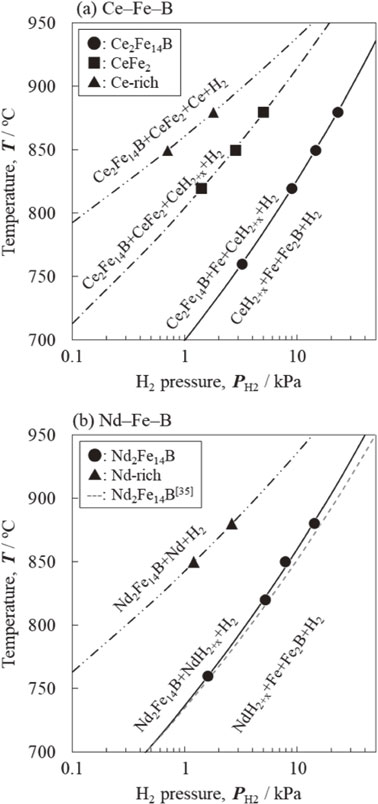64 巻, 11 号
選択された号の論文の18件中1~18を表示しています
- |<
- <
- 1
- >
- >|
Regular Article
Materials Physics
-
原稿種別: Regular Article
2023 年 64 巻 11 号 p. 2547-2552
発行日: 2023/11/01
公開日: 2023/10/25
[早期公開] 公開日: 2023/08/25PDF形式でダウンロード (3722K) HTML形式で全画面表示 -
原稿種別: Regular Article
2023 年 64 巻 11 号 p. 2553-2559
発行日: 2023/11/01
公開日: 2023/10/25
[早期公開] 公開日: 2023/09/01PDF形式でダウンロード (3583K) HTML形式で全画面表示 -
Influence of Co on Structure and Magnetic Properties of Ni50−xCoxMn29Ga21 Shape Memory Alloy Ribbons原稿種別: Regular Article
2023 年 64 巻 11 号 p. 2560-2567
発行日: 2023/11/01
公開日: 2023/10/25
PDF形式でダウンロード (4373K) HTML形式で全画面表示
Microstructure of Materials
-
原稿種別: Regular Article
2023 年 64 巻 11 号 p. 2568-2574
発行日: 2023/11/01
公開日: 2023/10/25
[早期公開] 公開日: 2023/08/25PDF形式でダウンロード (5357K) HTML形式で全画面表示 -
原稿種別: Regular Article
2023 年 64 巻 11 号 p. 2575-2583
発行日: 2023/11/01
公開日: 2023/10/25
PDF形式でダウンロード (5397K) HTML形式で全画面表示
Mechanics of Materials
-
原稿種別: Regular Article
2023 年 64 巻 11 号 p. 2584-2590
発行日: 2023/11/01
公開日: 2023/10/25
[早期公開] 公開日: 2023/08/25PDF形式でダウンロード (4082K) HTML形式で全画面表示 -
原稿種別: Regular Article
2023 年 64 巻 11 号 p. 2591-2595
発行日: 2023/11/01
公開日: 2023/10/25
PDF形式でダウンロード (2519K) HTML形式で全画面表示 -
原稿種別: Regular Article
2023 年 64 巻 11 号 p. 2596-2605
発行日: 2023/11/01
公開日: 2023/10/25
[早期公開] 公開日: 2023/09/01PDF形式でダウンロード (5480K) HTML形式で全画面表示
Materials Chemistry
-
原稿種別: Regular Article
2023 年 64 巻 11 号 p. 2606-2614
発行日: 2023/11/01
公開日: 2023/10/25
[早期公開] 公開日: 2023/08/18PDF形式でダウンロード (4345K) HTML形式で全画面表示 -
原稿種別: Regular Article
2023 年 64 巻 11 号 p. 2615-2621
発行日: 2023/11/01
公開日: 2023/10/25
PDF形式でダウンロード (4601K) HTML形式で全画面表示 -
原稿種別: Regular Article
2023 年 64 巻 11 号 p. 2622-2628
発行日: 2023/11/01
公開日: 2023/10/25
PDF形式でダウンロード (2469K) HTML形式で全画面表示 -
原稿種別: Regular Article
2023 年 64 巻 11 号 p. 2629-2636
発行日: 2023/11/01
公開日: 2023/10/25
PDF形式でダウンロード (4804K) HTML形式で全画面表示
Materials Processing
-
原稿種別: Regular Article
2023 年 64 巻 11 号 p. 2637-2642
発行日: 2023/11/01
公開日: 2023/10/25
PDF形式でダウンロード (3241K) HTML形式で全画面表示 -
原稿種別: Regular Article
2023 年 64 巻 11 号 p. 2643-2647
発行日: 2023/11/01
公開日: 2023/10/25
PDF形式でダウンロード (1177K) HTML形式で全画面表示 -
原稿種別: Regular Article
2023 年 64 巻 11 号 p. 2648-2655
発行日: 2023/11/01
公開日: 2023/10/25
PDF形式でダウンロード (4798K) HTML形式で全画面表示
Engineering Materials and Their Applications
-
原稿種別: Regular Article
2023 年 64 巻 11 号 p. 2656-2664
発行日: 2023/11/01
公開日: 2023/10/25
PDF形式でダウンロード (8642K) HTML形式で全画面表示 -
原稿種別: Regular Article
2023 年 64 巻 11 号 p. 2665-2672
発行日: 2023/11/01
公開日: 2023/10/25
[早期公開] 公開日: 2023/09/01PDF形式でダウンロード (4389K) HTML形式で全画面表示
Rapid Publication
-
原稿種別: Rapid Publication
2023 年 64 巻 11 号 p. 2673-2676
発行日: 2023/11/01
公開日: 2023/10/25
[早期公開] 公開日: 2023/09/08PDF形式でダウンロード (1770K) HTML形式で全画面表示
- |<
- <
- 1
- >
- >|
















